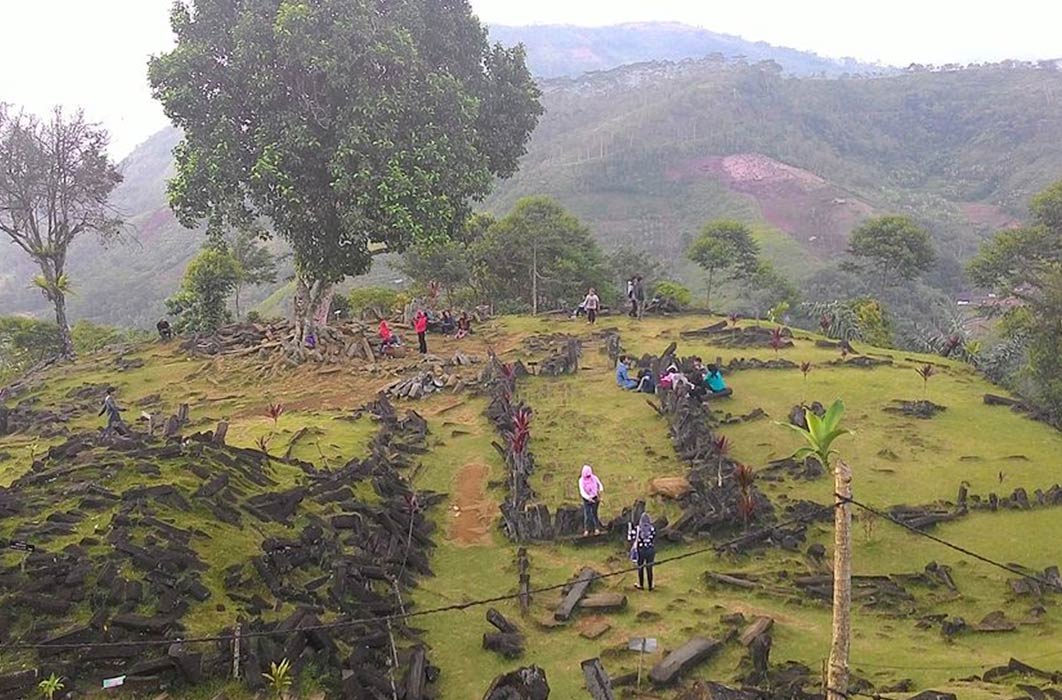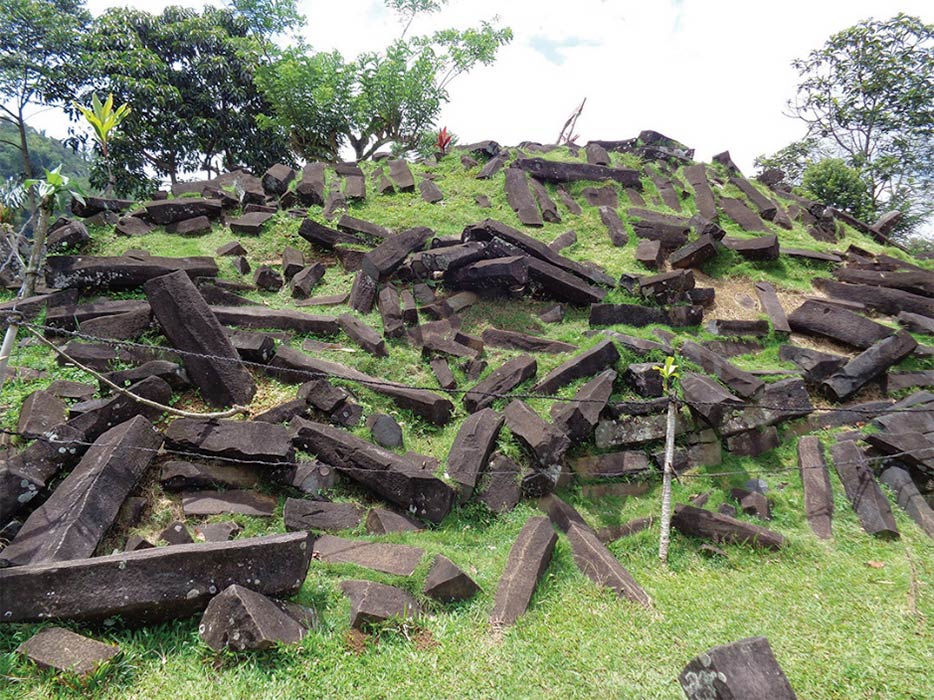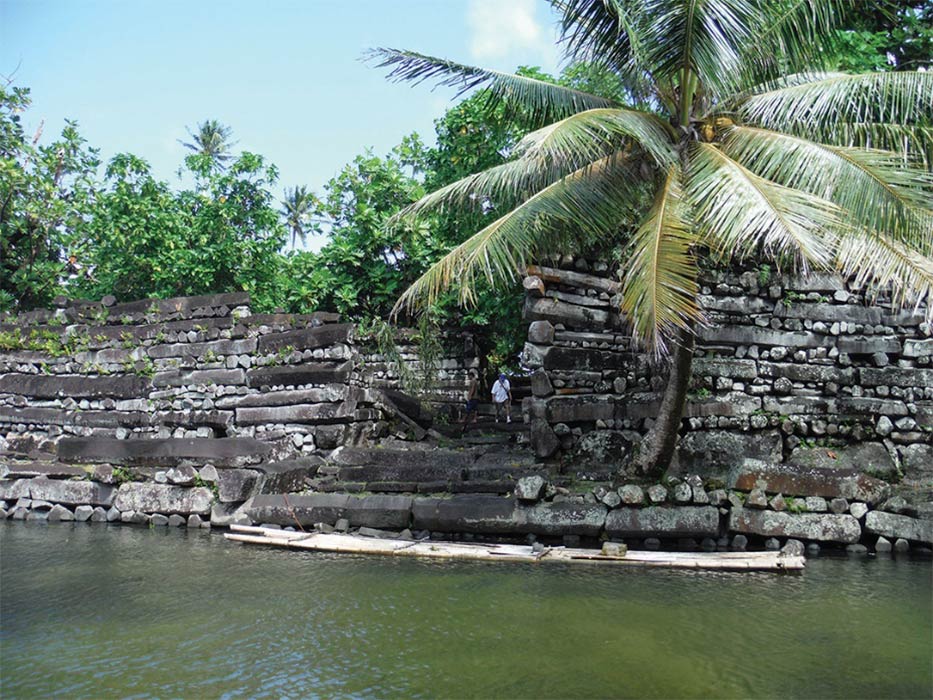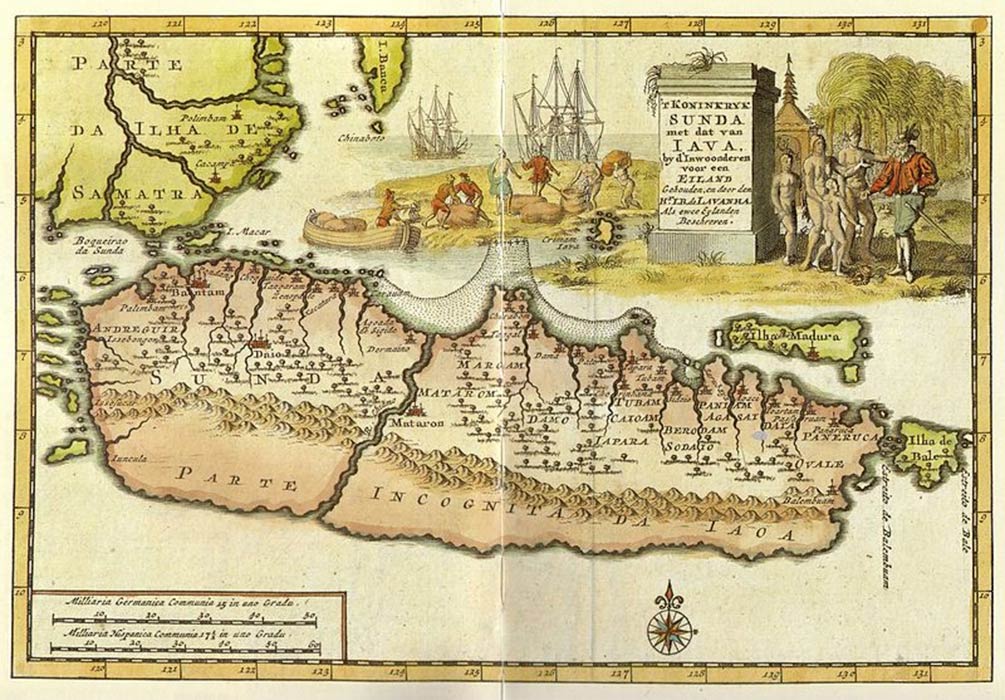
The Mystery of Gunung Padang, Java and the Cham
Jakarta, Indonesia’s capital and largest city, is a sprawling mass of cars, trucks, motorcycles and street vendors that can take hours to drive through. Jakarta is the gateway to the small town of Sukabumi in western Java and the strange ruins of Gunung Padang, the curious basalt megaliths on a hillside outside the town. The site was first mentioned in Rapporten van de Oudheidkundige Dienst (ROD, ‘Report of the Department of Antiquities’) in 1914. A Dutch historian named N. J. Krom is also said to have mentioned the site in 1949. The site was also visited by employees of the National Archaeology Research Centre at some point in 1979.

Gunung Padang (Image © David Hatcher Childress)
Hill Of Basalt Crystalline Logs
Since the site is largely a vast stack of hexagonal basalt crystal ‘logs’ these archaeologists were not sure what to make of it. Plus, they were confused as to whether this was some natural site or bizarre man-made site. What its purpose was, as there are no actual structures, was baffling to archaeologists, but it does seem to be a man-made structure of some sort. It is basically a huge hill of basalt crystalline logs—naturally-forming basaltic pillars or columnar blocks. There may be many millions of tons in total material situated in this huge pile of basalt pillars. It is uncertain how deep this pile of rock goes. Indeed, Gunung Padang must have at least 100 million tons of basalt accumulated in the ‘pyramid’ that the structure is said to be.
A similar site, though much bigger, lies on a Pacific Island in Micronesia called Pohnpei. On that island is a huge city—40 times larger than Gunung Padang—called Nan Madol. It is built out of the very same basalt hexagonal ‘logs’ and the material in that city is an estimated 250 million tons of basalt. The heaviest stone is estimated to weigh 80 tons.

Nan Madol (Image © David Hatcher Childress)
Gunung Padang (Gunung: mountain; Padang: pasture or field) is basically a hill in a series of terraces, bordered by retaining walls of volcanic stone. It is reachable from the small visitor center up a series of about 400 successive basalt steps rising steadily for 100 meters (328 feet). It is a short walk, but somewhat tiring. An ancient stairway of basalt steps is there to walk on, but the local government has built a secondary concrete path with a railing to walk up. The basalt steps can be slippery and they are narrow and irregular. There is also an ancient well and spring at the beginning of the steps with pure water surrounded by small basalt crystals.
At Gunung Padang these basalt crystals are five-or six-sided and about six feet (1.8 meter) in length. Some are longer. They are heavy, but individually each piece of crystalline basalt might weigh up to 300 or 400 pounds (181 kilograms). So, the site is a massive jumble of basalt, though no blocks that can be seen on the surface weigh more than a ton.






